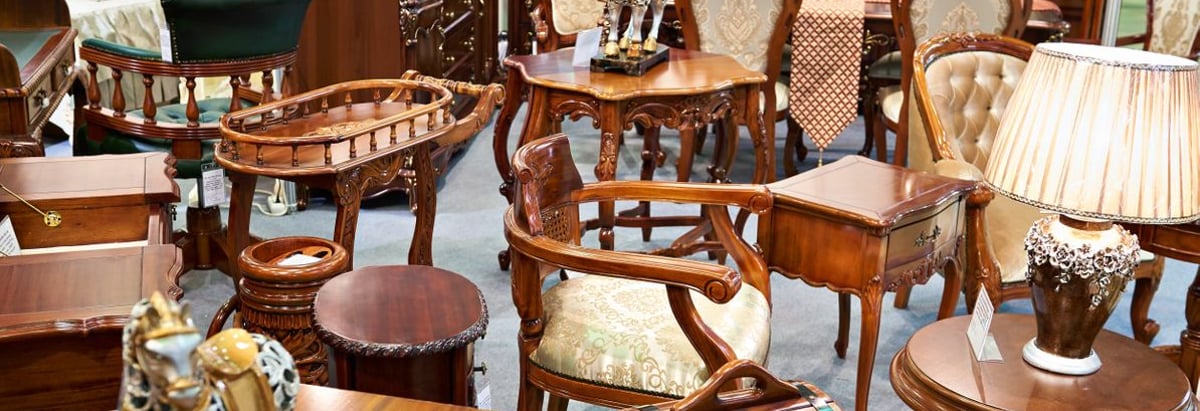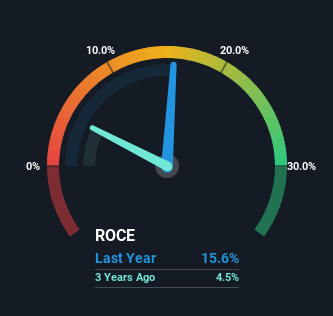- United States
- /
- Specialty Stores
- /
- NYSE:HVT
Haverty Furniture Companies (NYSE:HVT) Might Have The Makings Of A Multi-Bagger

If we want to find a potential multi-bagger, often there are underlying trends that can provide clues. Amongst other things, we'll want to see two things; firstly, a growing return on capital employed (ROCE) and secondly, an expansion in the company's amount of capital employed. This shows us that it's a compounding machine, able to continually reinvest its earnings back into the business and generate higher returns. So when we looked at Haverty Furniture Companies (NYSE:HVT) and its trend of ROCE, we really liked what we saw.
Understanding Return On Capital Employed (ROCE)
Just to clarify if you're unsure, ROCE is a metric for evaluating how much pre-tax income (in percentage terms) a company earns on the capital invested in its business. To calculate this metric for Haverty Furniture Companies, this is the formula:
Return on Capital Employed = Earnings Before Interest and Tax (EBIT) ÷ (Total Assets - Current Liabilities)
0.16 = US$82m ÷ (US$677m - US$151m) (Based on the trailing twelve months to September 2023).
Therefore, Haverty Furniture Companies has an ROCE of 16%. On its own, that's a standard return, however it's much better than the 12% generated by the Specialty Retail industry.
View our latest analysis for Haverty Furniture Companies

In the above chart we have measured Haverty Furniture Companies' prior ROCE against its prior performance, but the future is arguably more important. If you'd like to see what analysts are forecasting going forward, you should check out our free report for Haverty Furniture Companies.
What Does the ROCE Trend For Haverty Furniture Companies Tell Us?
Investors would be pleased with what's happening at Haverty Furniture Companies. The data shows that returns on capital have increased substantially over the last five years to 16%. Basically the business is earning more per dollar of capital invested and in addition to that, 41% more capital is being employed now too. The increasing returns on a growing amount of capital is common amongst multi-baggers and that's why we're impressed.
Our Take On Haverty Furniture Companies' ROCE
All in all, it's terrific to see that Haverty Furniture Companies is reaping the rewards from prior investments and is growing its capital base. And with the stock having performed exceptionally well over the last five years, these patterns are being accounted for by investors. So given the stock has proven it has promising trends, it's worth researching the company further to see if these trends are likely to persist.
On a separate note, we've found 2 warning signs for Haverty Furniture Companies you'll probably want to know about.
For those who like to invest in solid companies, check out this free list of companies with solid balance sheets and high returns on equity.
Valuation is complex, but we're here to simplify it.
Discover if Haverty Furniture Companies might be undervalued or overvalued with our detailed analysis, featuring fair value estimates, potential risks, dividends, insider trades, and its financial condition.
Access Free AnalysisHave feedback on this article? Concerned about the content? Get in touch with us directly. Alternatively, email editorial-team (at) simplywallst.com.
This article by Simply Wall St is general in nature. We provide commentary based on historical data and analyst forecasts only using an unbiased methodology and our articles are not intended to be financial advice. It does not constitute a recommendation to buy or sell any stock, and does not take account of your objectives, or your financial situation. We aim to bring you long-term focused analysis driven by fundamental data. Note that our analysis may not factor in the latest price-sensitive company announcements or qualitative material. Simply Wall St has no position in any stocks mentioned.
About NYSE:HVT
Haverty Furniture Companies
Operates as a specialty retailer of residential furniture and accessories in the United States.
Flawless balance sheet, undervalued and pays a dividend.
Similar Companies
Market Insights
Community Narratives



